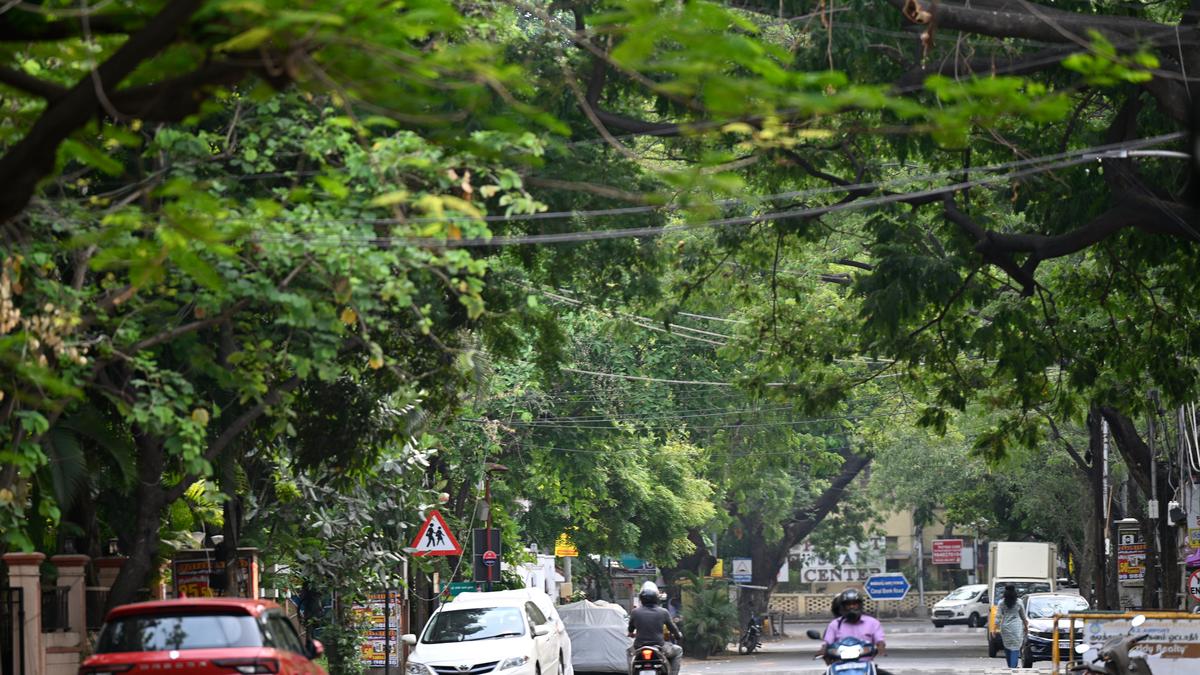
A stroll around the canopied neighbourhood
The Hindu
A stroll around the canopied neighbourhood
“Being under a tree is a holiday from reason — who has seen a bureaucrat clearing files under a tree after all? Imagine the Buddha with a briefcase, sitting under a tree,” author and poet Sumana Roy writes in her book How I Became a Tree. As wondrous as this thought is, a bunch of nature enthusiasts in Chennai gathered at Adyar on May 12 to take a stroll around the canopied neighbourhood for a reason — to acquaint themselves with the old trees on B. Ramachandra Adithanar Road through a tree walk organised by Nizhal, a non-profit environmental organisation.
Led by Chithra and Divya, the participants started the walk huddled under a gulmohar tree (Delonix regia), also known as the Royal Poinciana or sometimes the flame tree, known for its stunning red flowers. Some in the group recalled using its buds to decorate their nails in their childhood.
Using the tree to illustrate how exotics have become commonplace in the city, Divya explained that non-native trees grow faster than the native trees, but do not have strong, deep roots. This also makes them more vulnerable to cyclones.
The group then moved towards a huge monkey pod (Samanea saman), also called rain tree. With a wide umbrella-like canopy, this non-native tree can be found in many areas of the city. For the uninitiated in the group, the tale behind its moniker elicited chuckles. In Central America, the monkey pod tree with its sweet sap attracts certain insects, which, after sipping the sap copiously, urinates, letting out a gentle drizzle and giving the tree its nickname.
Next was an Indian cork tree (Millingtonia hortensis), called mara malli in Tamil. Native to India and Sri Lanka, this tree reaches up to 20 metres, offering ample shade and boasting broad, heart-shaped leaves. Besides its timber value, the tree holds significance in traditional medicine practices, said Chithra. She also explained how the common names of most trees in English have ‘Indian’ as prefix because of the lazy, colonial nomenclature that names them after similar-looking trees abroad.
The participants learned that in India, neighbourhoods often bear names derived from the trees growing in the region — Maruthamalai signifies the abundance of marutha maram (Terminalia arjuna), Purasawalkam is named after the numerous purasu trees (Butea monosperma), Panaiyur was rich with panai maram (Borassus) — a marker of how people’s lives were closely intertwined with nature. In the names “is the whiff of an older history, of a world in which trees and their ecology of shade were important,” writes Sumana Roy.
As the light of the day began to dim, the group walked past a temple tree, or frangipani, whose flowers brim with nectar that entices a variety of birds and insects; Indian beech (Pongamia pinnata), a leguminous tree that bursts into bloom with fragrant white, purple, and pink flowers; and, at last, the Pride of India (Lagerstroemia), also known as Queen’s Flower, with its resplendent purple and lilac flowers.











